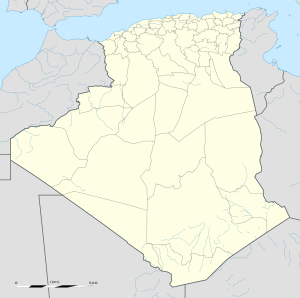Doucen | |
|---|---|
Commune and town | |
 Doucen commune | |
 | |
| Coordinates: 34°36′N5°06′E / 34.600°N 5.100°E | |
| Country | |
| Province | Ouled Djellal Province |
| District | Ouled Djellal District |
| Time zone | UTC+1 (CET) |
Doucen is a town and commune in Ouled Djellal Province, Algeria. Up until 2019, it was a commune of Biskra Province [1] .
